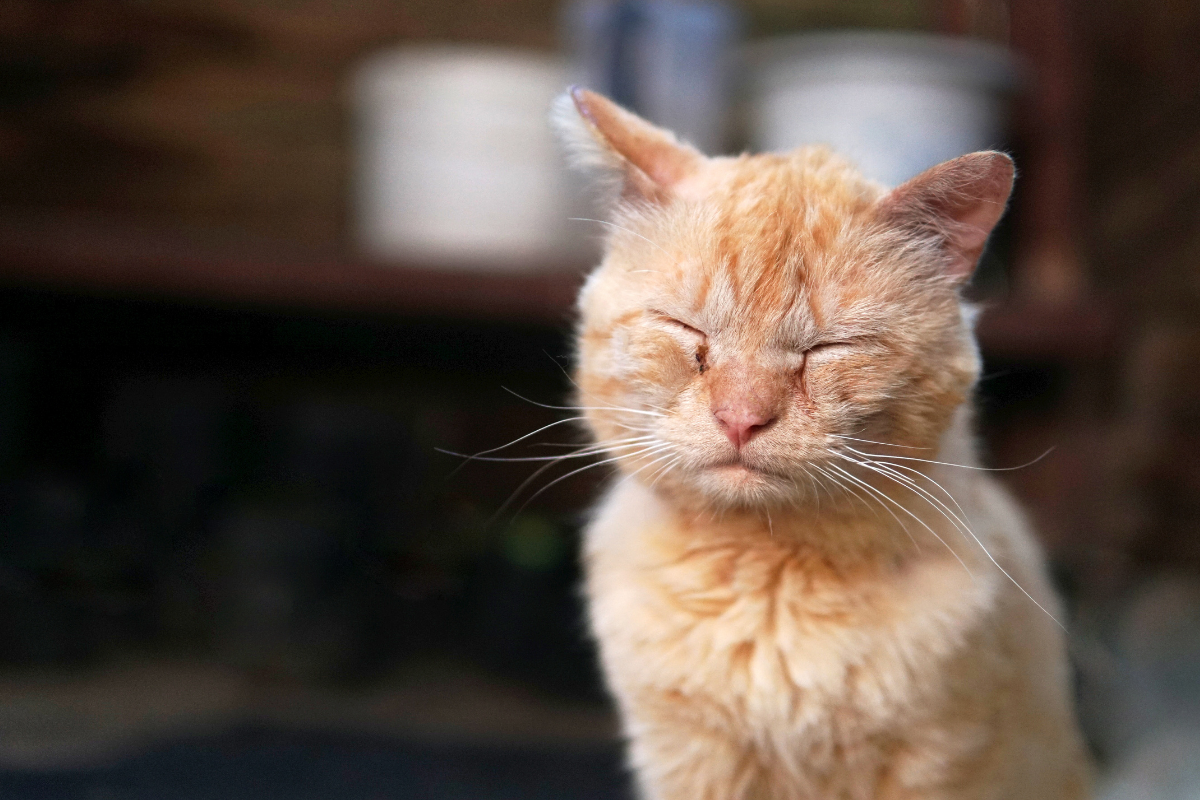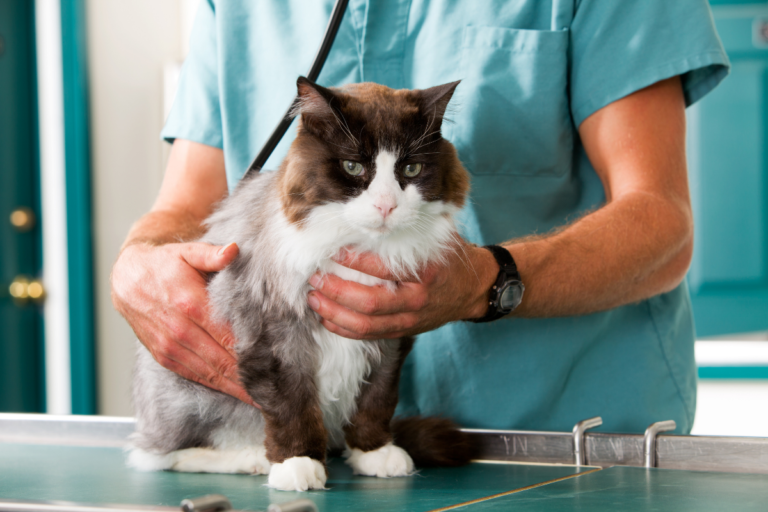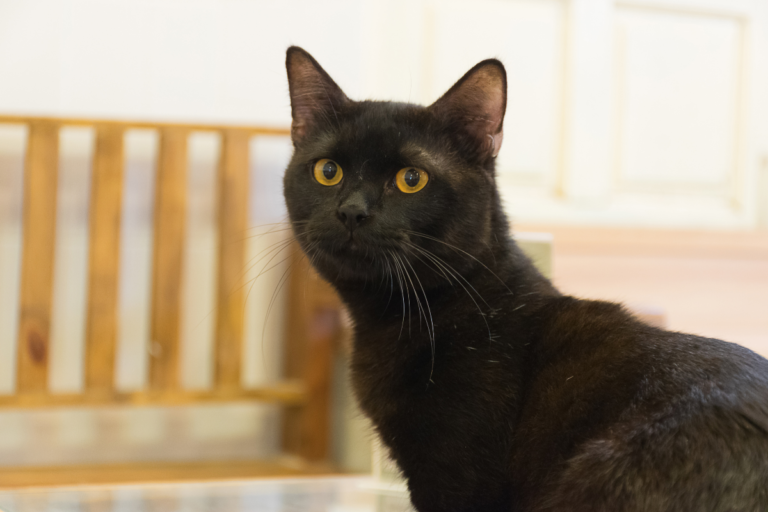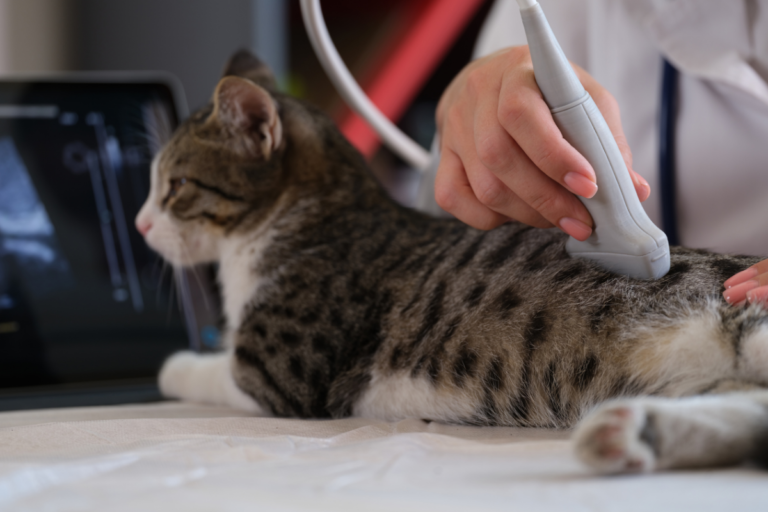Shielding Our Furry Friends: Key Facts About Common Cat Diseases
Understanding Cat Health
To keep our felines purring happily and living their best lives, we’ve got to get a grip on common kitty illnesses and the magic of prevention.
Overview of Cat Diseases
Just like us, cats can have their share of health drama. These can range from a little sniffle to something more serious like cancer or viral nasties such as FIV and FeLV.
- Cancer in Cats: It’s the silent villain where rogue cells decide to throw a party they aren’t supposed to have, whether they stay local or try to take on the whole kitten caboodle.
- FIV (Feline Immunodeficiency Virus): Think of FIV like a bad flu that keeps coming back. It chips away at their defenses, making them easy prey for other shifty microbes.
- FeLV (Feline Leukemia Virus): This troublemaker is a retrovirus that knocks down your cat’s immune system, opening the door to infections, anemia, and even cancer.
Trouble like heartworm disease and kitty diabetes can really throw a wrench in a cat’s quality of life. Knowing their game plan helps us spot the shady symptoms and tackle them head-on.
Importance of Preventative Care
Prevention is the name of the game in keeping our whiskered pals on top of their health game. Regular vet visits and preemptive steps can stop small issues from turning into major headaches.
- Wellness Exams: These check-ups are like a detective’s toolkit – blood tests, dental peeks, the works.
- Preventative Medication: This little trick can keep bugs like fleas and worms at bay. Curious about pesky fleas? Check out cat fleas symptoms, or get into the wormy details at cats worms symptoms.
| Preventive Measure | Frequency | Why It Matters |
|---|---|---|
| Wellness Exams | Every 6-12 months | Sniffs out issues before they escalate |
| Blood Tests | Annually or per vet’s word | Keeps tabs on vital organs |
| Vaccinations | On the vet’s timeline | Shields against nasty bugs |
| Dental Check-ups | Annually | Wards off cat dental disease |
Our preventative toolkit also needs to include good grub and exercise. Feed them balanced meals to dodge diabetes and heart troubles, keeping them at a healthy weight (ASPCA).
Keeping our eyes peeled on our cat’s health and staying proactive can make a massive difference in their lives. For more tips on keeping your golden oldie cats spunky, check out our guide on senior cat wellness.
Common Cat Illnesses
Hey there, fellow cat lovers! Knowing a bit about common cat problems can make a big difference in keeping our whiskered pals happy and healthy. Let’s chat about some things to watch for with our feline buddies.
Cancer in Cats
Cancer in cats might show up as a lump or just a feeling that something isn’t quite right. The big culprits are often lymphoma and mammary cancer. The good news? Many cats do well with a bit of help from the vet—like surgery, chemo, or radiation. Ask anyone who’s been through it; those routine vet trips can be a real game changer. So, it’s a good idea to check in with the vet regularly and keep an eye out for anything unusual.
| Cancer Type | Treatment Options |
|---|---|
| Lymphoma | Chemo, Radiation |
| Mammary Cancer | Surgery, Chemo |
Feline Immunodeficiency Virus (FIV)
FIV is a sneaky character, slowly meddling with a cat’s defenses. Your kitty might not look any different for quite some time, enjoying life as usual. And then boom, symptoms like fever, weight drop, and random infections might crop up. To keep FIV at bay, try keeping cats indoors and away from any that might already carry it. Regular vet visits? Yep, they help catch stuff early.
Key Points:
- Hits the immune system
- Cats may be symptom-free for ages
- Vet visits are a must (feline kidney disease symptoms, cat liver problems symptoms)
Feline Leukemia Virus (FeLV)
FeLV is like the bad guy of the feline world, making cats vulnerable to all sorts of nasties like anemia or kidney issues, even leading to a tough type of cancer in the lymph nodes. Cats mainly catch it from other cats through bodily fluids, so being a bit careful with who your kitty hangs out with can help. There’s a vaccine, too, so definitely chat with your vet about it, especially if your cat’s a social butterfly or lives with other cats.
| Disease Associated with FeLV | Symptoms |
|---|---|
| Anemia | Tiredness, pale gums, no appetite |
| Kidney Issues | Thirsty, losing weight, dull coat |
| Lymphosarcoma | Swollen lymph nodes, drop in weight, trouble breathing |
So, there you have it! Keeping tabs on these conditions and catching them early can really help our kitty companions live their best nine lives. Curious to learn more? Head over to our pieces on heart issues in cats and cat illness for some extra insights!
Health Risks and Prevention
Hey there, fellow cat enthusiasts! As loving kitty parents, we all want our whiskered pals purring with health and happiness. Getting a grip on what health hiccups our cats might face is the first step in keeping them spry and sassy. Two biggies in the cat health scene? Heartworm disease and feline diabetes.
Heartworm Disease
So, heartworm—scary name, right? It’s a pesky predicament caused by wormy invaders. Cats aren’t their favorite hosts, but when heartworms crash the party, trouble is sure to follow (ASPCA). These worms especially mess with the lungs and hitch rides on mosquitoes, making both outdoor and indoor kitties vulnerable.
Heartworm Symptoms:
- That annoying cough
- Upset tummy
- Struggling to catch their breath
If it gets bad, it can be life-threatening, especially for the little furballs and golden oldies among our cat clan. Sometimes, it’s brushed off as just kitty asthma or bronchitis when it’s actually heartworm playing the villain.
| Symptom | Description |
|---|---|
| Coughing | Persistent |
| Vomiting | Routine boot and rally |
| Breathing Difficulties | Huffing and puffing |
To dodge this drama, monthly heartworm preventatives are the way to go. Whatever their hangout spot—couch or garden, cats are safer with a year-round prevention plan (Naples Coastal Veterinary Clinic). Check our advice on dealing with heart issues in cats for more insights.
Feline Diabetes Mellitus
Onto the sugar struggles: feline diabetes! This one triggers when kitty bodies can’t handle insulin right, making the blood sugar go bananas. Any cat could suffer, but it’s mostly the older, chubbier cats who have a run-in with this troublemaker.
Common Diabetes Clues:
- Drinking like it’s going out of style
- A litter box that’s always open for business
- Dropping pounds despite wolfing down meals
| Symptom | Description |
|---|---|
| Increased Thirst | Drinking a lake’s worth of water |
| Frequent Urination | Nonstop potty breaks |
| Weight Loss | Slimming down despite chowing down |
Managing cat diabetes is a team sport, combining tracking blood sugar, giving insulin shots, and fine-tuning kitty chow. A balanced diet and keeping our fur friends in shape are vital. We’ve got more help on handling a diabetic cat in our related treasure trove of articles.
By keeping an eye on these risks and aaranging preventive measures, we’ll keep our furry sidekicks bouncing with life. Regular vet check-ups and conversations about cat health can nip issues in the bud. Want to dig deeper into cat health mysteries? Discover more on cat illness.
Wellness Testing for Cats
We love our cats to pieces, and keeping them in tip-top shape is key to their long, purring life. A bit of regular wellness check-up magic? That’s the ticket. It lets us see things coming from a mile away so we can jump into action and give our feline sidekicks a happier, longer stretch with us. Wellness testing involves all kinds of diagnostics, like blood tests and the good ol’ wellness exam.
Diagnostic Blood Tests
These tests are like having a little window into our cat’s body. They check on how things are flowing in there—blood cells, organs, all the systems humming along. Pretty crucial stuff, even more so if we’re keeping an eye on conditions like kidney hiccups or the heart playing out of tune. Blood tests are the unsung heroes before any anesthesia ventures, too, and they’d wave the red flag at anything that could jump from cat to human (Vetster).
Common Blood Tests and Their Uses
| Test Type | Purpose |
|---|---|
| Complete Blood Count (CBC) | Checks white and red blood cells, and platelets |
| Blood Chemistry Panel | peeks at liver, kidney, and electrolytes |
| Thyroid Function Test | keeps tabs on thyroid action |
| Retrovirus Test | screens for FeLV and FIV |
Kittens have their work cut out for ’em with those tough-guy retrovirus tests for feline leukemia (FeLV)) and feline immunodeficiency virus (FIV), plus more poop patrols for pesky parasites. Our senior whiskered pals? They need TLC—the testing kind—every six months to a year, making sure blood, pee, poop, and pressure are all in check.
Importance of Wellness Exams
Now, those wellness exams—they’re our cats’ wellness VIP pass. Spotting problems before they pick up speed, infections hitting the roadblock, anesthesia giving zero-shock treatments, genetic quirks caught in the act—it’s all part of the job (Vetster).
Veterinarians give a high-five to regular exams since it lets them plan exactly what our cats need, skipping the trial-and-error guessing game. For our gray-whiskered elders, it’s even more vital ’cause let’s face it, time doesn’t always play fair (Vetster).
Benefits of Routine Wellness Exams
- Catching diseases on the down low
- Stopping infectious nasties
- Safety dance with anesthesia
- Finding those family-secret genes
Routine wellness exams work their magic in keeping those sweet whiskers healthy and give us more cuddle-hours with our meowing mates. Double down with diagnostic blood tests, and we’ve got a whole package deal, guarding our kitties so they can bask in the sun for countless afternoons.
More curious cat info awaits! Dive into our guides on nip the signs of feline kidney disease, sort out heart issues, and solve liver puzzles.
Aging Cats and Health
Our fuzzy buddies need extra love and care as they get older. Much like people, senior cats have their own special set of needs to keep them feeling their best. Let’s jump into how we can keep our golden oldies purring along with health checks and smart tips for looking after them.
Senior Cat Wellness
Cats over the age of ten start to need extra care because they’re more likely to run into health bumps. It’s like their version of a senior discount—more check-ins at the vet to spot any sneaky issues early. Keeping tabs on their health means they’ll have more happy days chasing sunbeams. Here’s what to keep an eye on:
- Regular Check-Ins: Depending on their age and health background, have our older cats see the vet every six to twelve months. These check-ups catch changes early and help those whiskered buddies of ours stay healthy.
- Thorough Tests: During these visits, vet docs might run a variety of checks like blood tests and urine samples to see what’s up inside. They might also check for any viruses, depending on where our cat’s been hanging out (Vetster).
| Age (Years) | How Often They Visit the Vet |
|---|---|
| 10 – 12 | Every 12 months |
| 13 – 15 | Every 6 – 12 months |
| 16+ | Every 6 months |
Health Monitoring for Aging Cats
Making sure our aging cats stay in tip-top shape involves a team effort filled with tests, keen observations, and preventive measures. Focus on these important bits:
The Way with Tests
Blood tests give us a peek behind the scenes of our cat’s health. They help figure out what’s going on with blood cells and organs and can spot problems like kidney or heart issues (Vetster). These tests are lifesavers, especially before any surgery or to catch stuff that might spread to humans.
Keeping an Eye Peeled
Watching out for changes in our cat’s behavior or routines can wave a red flag for health hitches:
- Weight Changes: Keep tabs on your furry pal’s weight. A sudden drop or a hefty gain can spell trouble.
- Fur and Moves: Notice any changes in their fur, energy levels, or teeth? These can all hint at underlying issues, especially dental ones.
- Mood Shifts: Cats might act differently as they age, like becoming a couch potato or showing signs of discomfort. Look for changes in how much they’re sleeping or grooming themselves.
Being Proactive
Preventive care is like handing your cat another lease on life. This means feeding them the right foods, making sure they sip enough water, and keeping those teeth squeaky clean. A few playful pounces a day and a stimulating environment can keep their minds sharp and tails twitching.
Staying on top of senior cat wellness and health checks means more snuggle time with our beloved companions. For more tips on looking after older cats, mosey on over to our special guides on feline kidney disease symptoms, cat teeth, and cat eye problems.






